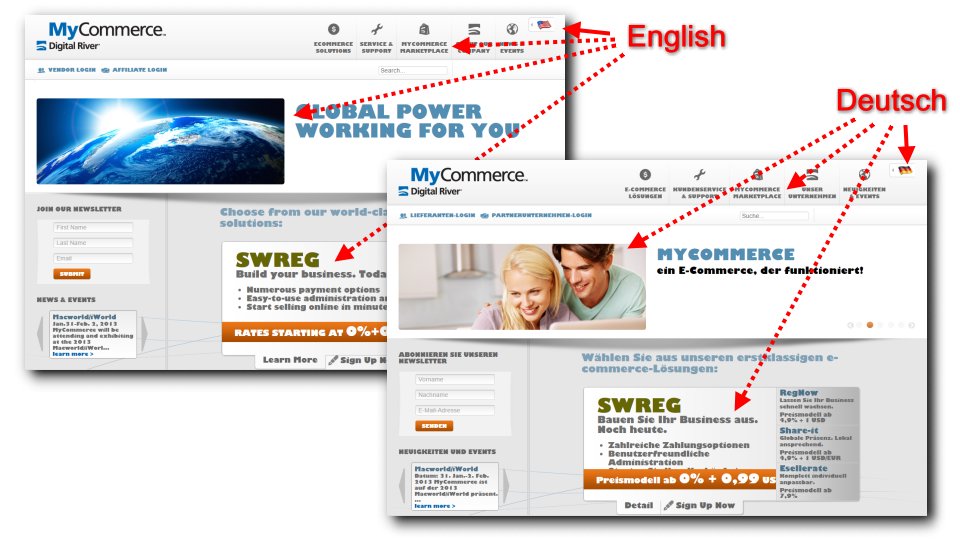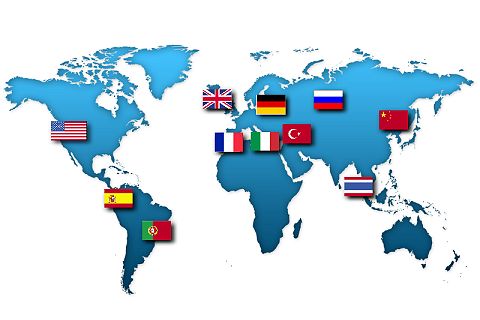A website can offer multiple versions of the same page based upon the site visitor’s preferred language.
Common applications
- Communicating a brand or message internationally
- Selling internationally
- Offering a Spanish alternative to US audiences (or French alternative for French Canadians)
How internationalization works on websites
Every user’s browser is set to a preferred language, such as English for most Americans. But those preferring a different language will set their browser’s preference accordingly. If the website offers a page in an alternate language that the user prefers, the website will deliver that version – even if the link naturally points to a different language. Further, multi-lingual sites display language tags or flags that allows the user to switch languages as desired.
Do be realistic. Text is not automatically translated as if it were a magical process. Automated translation tools like Google Translations are far from perfect and produce less-than-professional results. If a client wants a multi-lingual site, we can work with the client to find and hire a professional translator.
Example
Digital River offers services internationally. They requested a product site that would be rendered into five languages, including the right-to-left Chinese. The page layouts would look the same across languages.

Further, the selection of images (such as those in the home page slide show) were hand-picked per language to accommodate selling and communicating across cultural differences.
